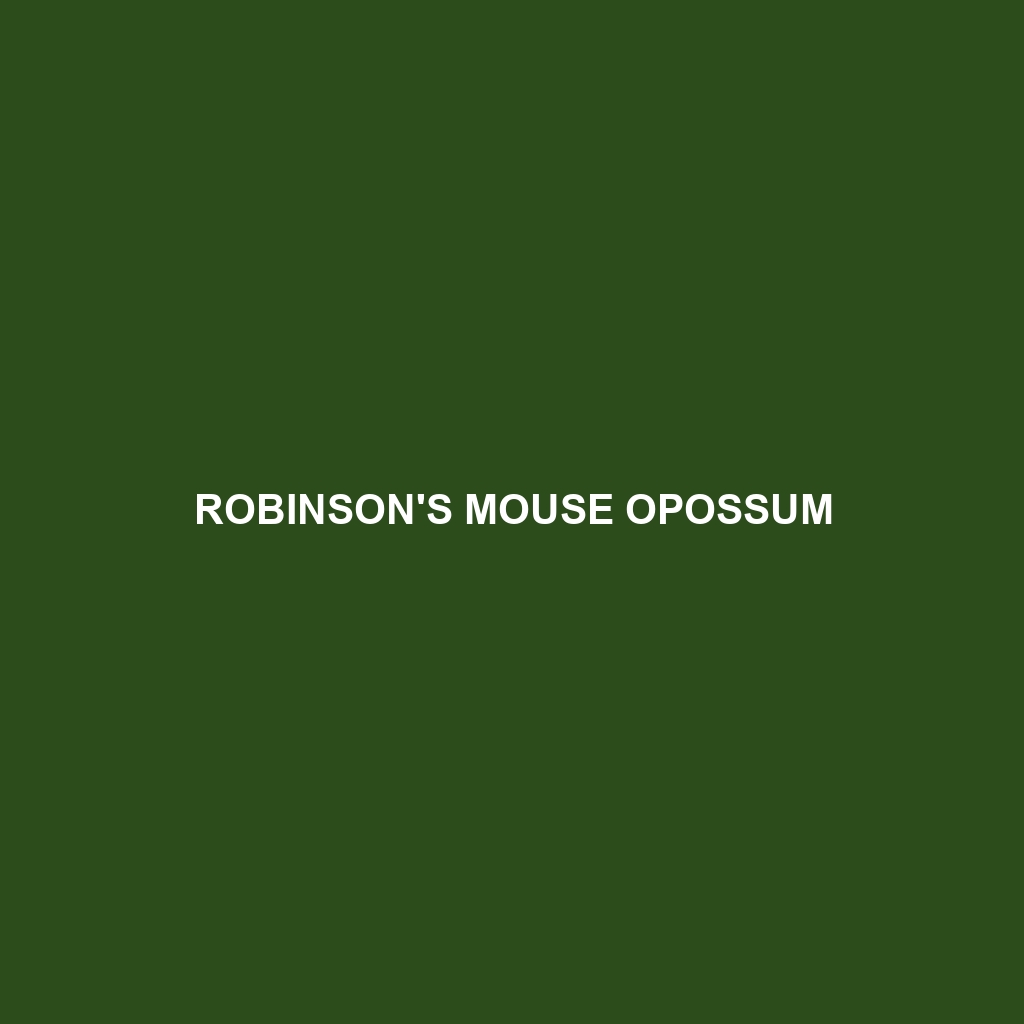Robinson’s Mouse Opossum: A Detailed Description
Robinson’s Mouse Opossum (Marmosa robinsoni) is a small, nocturnal marsupial native to Central and South America. Known for its agile movements and striking appearance, this diminutive creature plays a crucial role in its ecosystem, both as a predator and prey. Despite its size, Robinson’s Mouse Opossum is a fascinating species with unique adaptations and behaviors that make it a captivating subject for wildlife enthusiasts.
Physical Characteristics
Size: Robinson’s Mouse Opossum is a small mammal, typically weighing between 20 to 60 grams. Its body length ranges from 10 to 15 centimeters, with a tail that can be as long as or longer than its body, measuring up to 17 centimeters.
Coloration: This species boasts a soft, dense fur that ranges from grayish-brown to reddish-brown on the dorsum, while the ventral side is usually lighter, often white or pale yellow. The large, dark eyes are encircled by distinct black markings, giving it a masked appearance.
Special Features: One of the striking features of Robinson’s Mouse Opossum is its prehensile tail, which is used for balance and grasping branches as it navigates through the trees. Additionally, they have sharp claws and padded feet that aid in climbing.
Behaviors
Social Interactions: Robinson’s Mouse Opossum is generally solitary, although females may sometimes be seen with their young. They are territorial animals, and both males and females maintain defined home ranges.
Feeding Habits: As omnivores, they have a varied diet that includes insects, small vertebrates, fruits, and nectar. Their flexible diet allows them to adapt to different food availability throughout the year.
Ecological Roles: This species plays a dual role in the ecosystem. As predators, they help control insect populations, while as prey, they provide food for larger predators such as owls and snakes. They also aid in seed dispersal through their fruit consumption.
Habitat
Robinson’s Mouse Opossum is typically found in a variety of habitats ranging from lowland tropical forests to montane forests. They are arboreal and prefer dense, moist forest environments where they can find ample food and cover. Their adaptability also allows them to inhabit secondary forests and disturbed areas.
Adaptations
Nocturnal Lifestyle: Being nocturnal, Robinson’s Mouse Opossum has adapted to life in the dark with excellent night vision and heightened senses of smell and hearing.
Arboreal Skills: Their prehensile tail and specialized feet make them adept climbers, allowing them to navigate the forest canopy with ease.
Reproductive Adaptations: Females have a pouch-like structure where they carry and nurse their young, which are born at a very early stage of development and continue to grow while attached to the mother.
Conservation Status
Currently, Robinson’s Mouse Opossum is listed as Least Concern by the IUCN Red List. However, like many forest-dwelling species, they face threats from habitat loss due to deforestation and human encroachment. Conservation efforts focused on preserving their natural habitats are crucial for their continued survival.
Fun Facts
Despite their name, Robinson’s Mouse Opossum is more closely related to kangaroos and koalas than to mice.
They are known for their impressive leaping abilities, which help them move quickly through the trees to escape predators or catch prey.
Unlike many other marsupials, Robinson’s Mouse Opossum does not have a fully developed pouch. Instead, their young cling to the mother’s teats and are carried around until they are more developed.
Robinson’s Mouse Opossum is a remarkable example of the diverse and adaptable wildlife found in Central and South America. By understanding and appreciating their unique attributes and ecological roles, we can better support conservation efforts to protect these intriguing creatures and their habitats.
